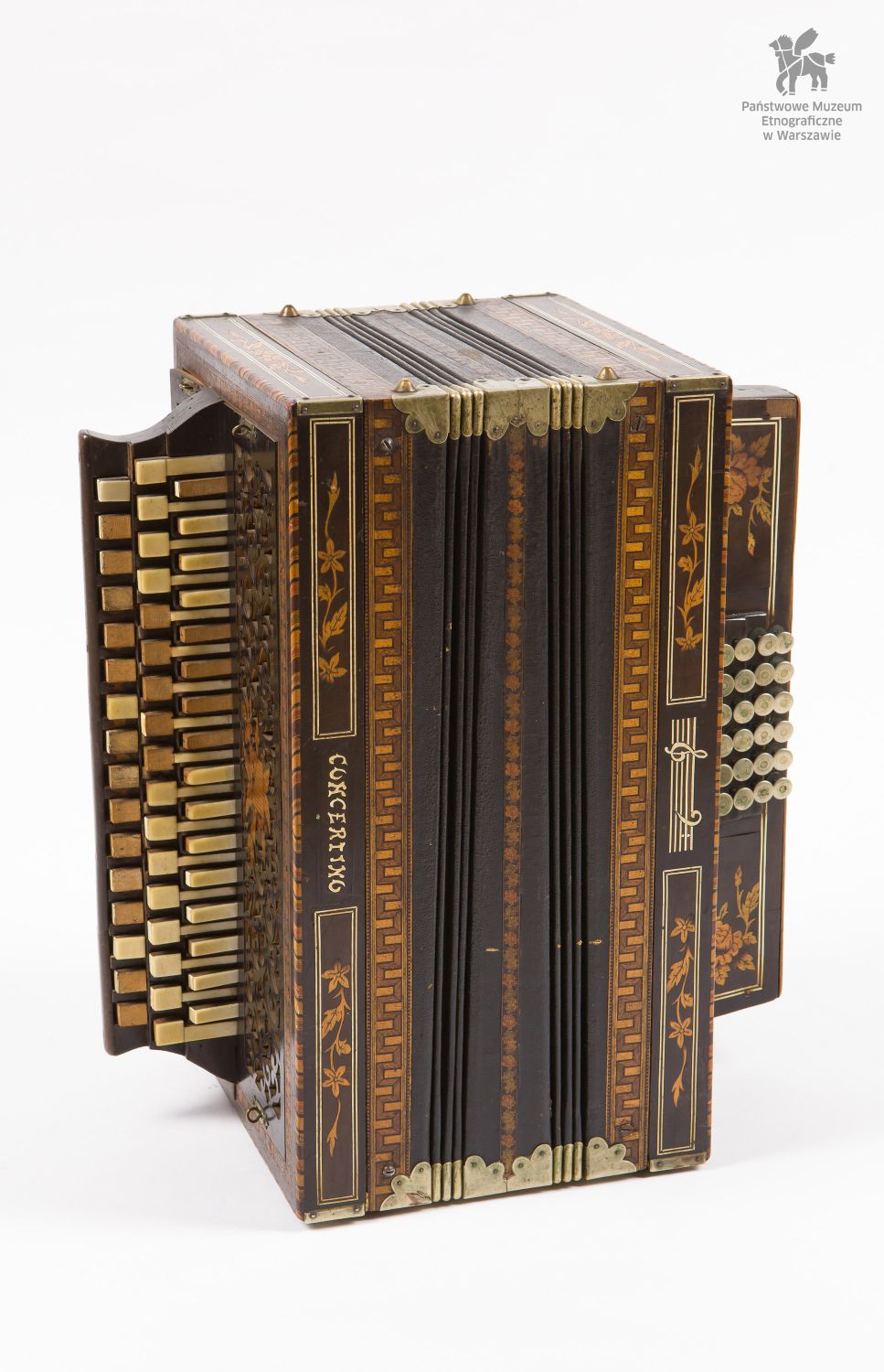pedal accordion
pedal accordion
Local name: pedałówkaClassification: 4 Aerophones / 41 Free aerophones / 412 Interruptive free aerophones / 412.1 Idiophonic interruptive aerophones or reeds / 412.13 Free reeds / 412.132 Sets of free reeds / 412.132-62-8 Sets of free reeds with flexible air reservoir, with keyboard
Maker: Ostrowski Jan
Date: first half of the 20th c.
Village / Town: Warsaw / Piaseczno
Region: Mazovia
Country: Poland
Owner: The State Ethnographic Museum in Warsaw
Inventory number: PME 40684/1-4
Description: a pedal accordion; called "black"; chromatic; three-row keyboard 16/17/16 melody keys, 24-basses; bellows connected with pedals through a pipe
Decoration: body embellished with geometrical and floral patterns, and the motive of a staff with violin and bass keys (inlay); open work with stylized vegetable motives
Measurements: 396 x 355 x 226 mm, pedals 440 x 340 x 90 mm
Materials: wood, metal, cloth, plastic
Inscriptions: on the body: CONCERTINO / J. Ostrowski; a stamp inside of the instrument: Zakład Organmistrzowski (Jana Ostrowskiego) Warszawa / Piaseczno
Sound compass, tuning: different scales depending on the type and specimen; usually the melody keyboard is arranged in minor-third rows composing the chromatic scale B♭ – b♭''', while the bass side is arranged in the chromatic scale C – b, which makes it possible to get all major triads
Performance practice: after World War I the accordion became a popular component of folk bands; the pedal variety becoming especially popular in Mazovia on the right side of the Vistula river (the region of Kurpie and the Garwolin area), to some degree also in Podlasie (Podlachia)
Catalog card by: Teresa Lewińska / Zbigniew J. Przerembski
Mason Mazurka; Stanisław Stępinak (b. 1935, Radzice), pedal accordion; rec. Kazimierz 1990; Sources of Polish Folk Music
<< Back














